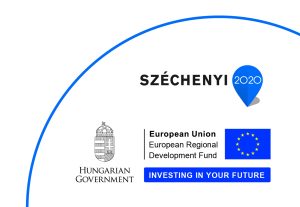Grant report of the project VEKOP-4.1.2-17-2018-00001 entitled “The complex utilisation for tourism of the heritage of the Roman limes section in Óbuda-Aquincum”
Read our project report here
| CN | CZ | DE | EN | FR |
| HU | NL | PL | RU | SK |
The Local Government of Budapest, District III, Óbuda-Békásmegyer, as consortium leader, together with the Budapest History Museum (BHM), the Hungarian Tourism Agency (HTA), and the Castle Headquarters Integrated Regional Development Centre Nonprofit Private Limited Company submitted a joint VEKOP-application in Summer 2018, which received—under the identification number VEKOP-4.1.2-17-2018-00001 and title “The complex utilisation for tourism of the heritage of the Roman limes section in Óbuda-Aquincum”—a non-refundable grant of gross 469 053 735 HUF. During the implementation of the project, instead of the Castle Headquarters Integrated Regional Development Centre Nonprofit Private Limited Company, the Lechner Knowledge Center Non-profit Limited Company joined the project as consortium partner.
The aim of the project is to develop the utilisation of the ancient Roman heritage of District III, with a special focus on the Aquincum Museum, for tourism. The two main development components of the Budapest History Museum were the construction along Szentendrei Road of Phase 1 of the Esplanade of the internationally-renowned museum with the largest Roman collection in the country, as well as the further development of the existing exhibition space and creation of an interactive exhibition space at the Aquincum Museum. Both developments took place on Municipality of Budapest property, with the BHM as project owner. The planning started already in 2017, using funds from the Municipality of Budapest. The approval of the plans and the preparation of the implementation plans took place in early 2020, and construction began in 2022. In addition to the Aquincum Museum site, the project also involved the Military amphitheatre and the Kórház Street fortress gate. At those two sites, the past is presented to us in the form of reconstruction panels, and we can also see the past virtually on our phone screens using a proprietary app.
 |


